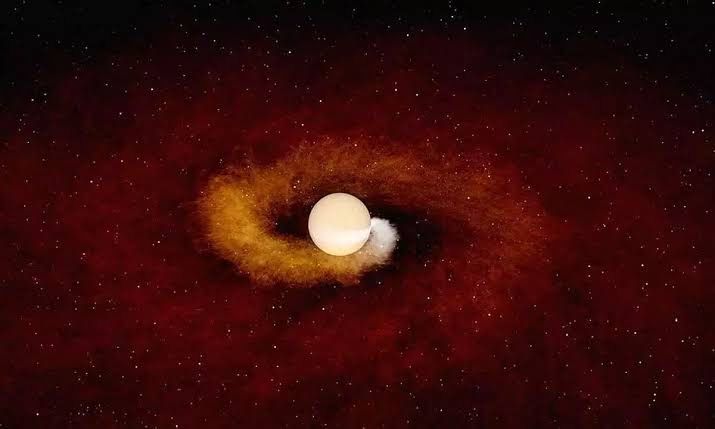The Star Swallower: A Prelude to Earth's Ultimate End
In a galaxy far, far away, about 12,000 light years to be precise, a phenomenon that once only lived in the calculations and theories of astronomers has been directly observed for the first time - a star devouring a planet. This cosmic spectacle has provided a spine-chilling glimpse of

In a galaxy far, far away, about 12,000 light years to be precise, a phenomenon that once only lived in the calculations and theories of astronomers has been directly observed for the first time - a star devouring a planet. This cosmic spectacle has provided a spine-chilling glimpse of what is predicted to be the eventual fate of Earth, several billion years down the road.
The lethal dance between star and planet that unfolded before scientists' eyes was akin to a live preview of the doomsday scenario our home planet is destined to experience. In about five billion years, when our sun's hydrogen reserves have dwindled, its core will shift from fusion based on hydrogen to fusing helium into carbon. This change will cause the Sun to inflate into a gargantuan Red Giant, potentially a hundred times its current size, devouring the inner planets, Earth included, in its fiery growth.
The discovery of this celestial devouring was announced by a team of astronomers, led by NASA Einstein Fellow Kishalay De at MIT. Their findings, which were published in the journal Nature, detailed how the scientists had been fortunate to catch this cosmic spectacle in action. They observed a star, unromantically named ZTF SLRN-2020, expanding as it consumed a Jupiter-sized planet in a breathtaking cosmic ballet.
What tipped the astronomers off was a peculiar light signature detected by the Swicky Transient Facility at the Palomar Observatory in California, initially thought to be related to red novas, a kind of stellar explosion. Further analysis, combining ground-based observatories and past infrared data from NASA's NEOWISE space telescope, indicated that the strange light was evidence of a star midway through its meal.
As the star devoured the doomed planet, it ejected hot gases into space that then cooled and turned into dust, creating a unique light signature. This initial burst of light lasted for ten days, with the star continuing to glow strangely for six months as it consumed the planetary material.
Witnessing such a spectacle is not only awe-inspiring but also immensely beneficial for the scientific community. The incident provides a blueprint for detecting similar events in the cosmos. Especially with the Vera C. Rubin Observatory going live in 2025, such insights will aid the search for similar phenomena.
Observing a star devouring a planet offers us a glimpse of our home's ultimate fate. It is a stark reminder of the cosmic cycles of birth, life, and death, and the inevitability of change, even on a cosmic scale. While it may be disturbing to consider the eventual consumption of our planet, it also illuminates the beauty and brutality of the universe, and the ephemeral nature of all things within it. But don't lose sleep over it just yet. After all, there's still about five billion years left on the clock.




